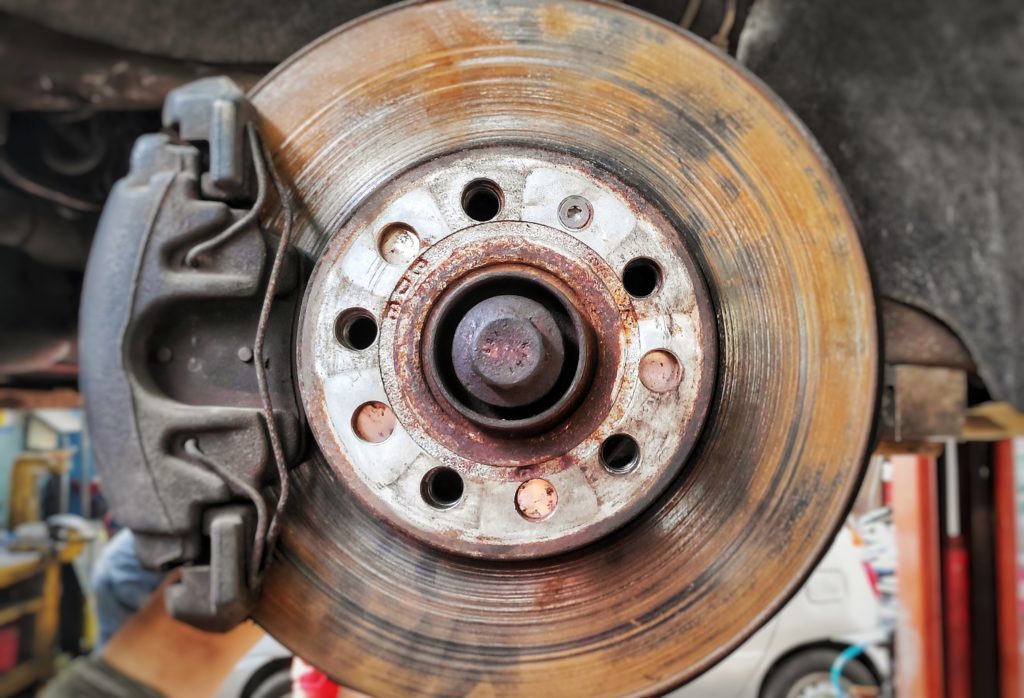Deciphering Disc Degradation: When to Replace Your Car's Rotors
That subtle shudder you feel when braking? That high-pitched squeal echoing from your wheels? These could be the whispers of worn-out brake rotors, pleading for attention. Ignoring these signs can compromise your car’s stopping power, a critical safety concern. Knowing when to replace your rotors isn't just about maintenance; it’s about ensuring a safe and responsive driving experience.
Brake rotors, those metallic discs gripped by the brake pads, are essential components in your car’s braking system. Their condition directly impacts your vehicle’s ability to decelerate effectively. Determining the right time for rotor replacement involves understanding the signs of wear and tear, recognizing the factors influencing rotor lifespan, and prioritizing safety above all else.
From the earliest drum brakes to today's sophisticated disc brake systems, the principle remains the same: friction is key. Rotors, initially simple metal discs, have evolved alongside braking technology. Modern rotors often feature ventilated designs for improved heat dissipation, crucial for maintaining consistent braking performance under demanding conditions.
Neglecting timely rotor replacement invites a host of potential problems. Beyond the obvious safety implications of reduced braking power, worn rotors can damage other brake components, leading to more extensive and costly repairs down the line. Uneven rotor wear can cause vibrations, making for an uncomfortable ride and potentially accelerating wear on other suspension parts.
Recognizing the signs of rotor wear is crucial. A pulsating brake pedal, grinding noises during braking, and visible grooves or scoring on the rotor surface are all red flags. However, sometimes the signs are less obvious, making regular inspections during brake pad changes vital. This allows mechanics to measure rotor thickness and assess their overall condition.
Typical rotor lifespan varies depending on driving habits, vehicle type, and rotor material. Aggressive driving styles and frequent heavy braking will naturally wear rotors faster. While some rotors can last for 70,000 miles or more, others might need replacement as early as 30,000 miles. Consult your vehicle's owner's manual for manufacturer recommendations.
One benefit of timely rotor replacement is enhanced safety. Fresh rotors provide optimal braking performance, crucial for avoiding accidents. Another benefit is improved fuel efficiency. Worn rotors can create drag, reducing your vehicle’s mileage. Finally, new rotors contribute to a smoother, more comfortable ride, eliminating vibrations and noise.
If you suspect your rotors are nearing the end of their life, take your car to a qualified mechanic for inspection. They can measure rotor thickness and check for any signs of damage. Based on their assessment, they'll advise you on whether replacement is necessary.
Advantages and Disadvantages of Timely Rotor Replacement
| Advantages | Disadvantages |
|---|---|
| Improved Safety | Cost of Replacement |
| Better Fuel Efficiency | Potential for Unnecessary Replacement if Diagnosis is Incorrect |
| Smoother Ride |
Best Practices:
1. Regular Inspections: Include rotor checks during every brake pad change.
2. Gentle Braking: Avoid harsh braking whenever possible to reduce rotor wear.
3. Quality Parts: Choose high-quality rotors for optimal performance and longevity.
4. Professional Installation: Have rotors replaced by a qualified mechanic.
5. Break-in Period: Follow the manufacturer’s recommendations for breaking in new rotors.
Frequently Asked Questions:
1. How often should I replace my rotors? Consult your owner's manual and pay attention to wear indicators.
2. Can I replace rotors myself? It's recommended to have a professional handle rotor replacement.
3. What are the signs of worn rotors? Vibrations, noise, and visible grooves or scoring.
4. How much does rotor replacement cost? Costs vary based on vehicle type and rotor quality.
5. Can I just resurface my rotors instead of replacing them? Resurfacing is possible, but replacement is often the better long-term solution.
6. What are the best rotor materials? Consult your mechanic for recommendations based on your driving habits.
7. How can I extend the life of my rotors? Avoid harsh braking and ensure regular maintenance.
8. What happens if I ignore worn rotors? You risk compromising braking performance and damaging other components.
Tips and Tricks: Avoid riding your brakes, especially downhill. Choose rotors that match your driving style. Consider performance rotors for more demanding applications.
Understanding when to replace your car’s rotors is fundamental to safe and efficient driving. By recognizing the signs of wear, prioritizing regular maintenance, and choosing quality replacement parts, you can ensure optimal braking performance and extend the life of your braking system. Don't compromise on safety – be proactive in maintaining your rotors and enjoy the peace of mind that comes with a responsive and reliable braking system. Consult your mechanic today if you suspect your rotors need attention. Investing in proper brake maintenance is an investment in your safety and the longevity of your vehicle. Regular checks and timely replacements can prevent more costly repairs down the line and ensure a smooth, safe driving experience for years to come. Don’t underestimate the importance of these often-overlooked components. They are, after all, crucial for bringing your vehicle to a safe stop.
The enduring appeal of the classic century ballpoint pen
Resumo do jogo do brasil hoje catch the highlights
Unlocking the thrill of horse racing a guide to understanding race results and reports














